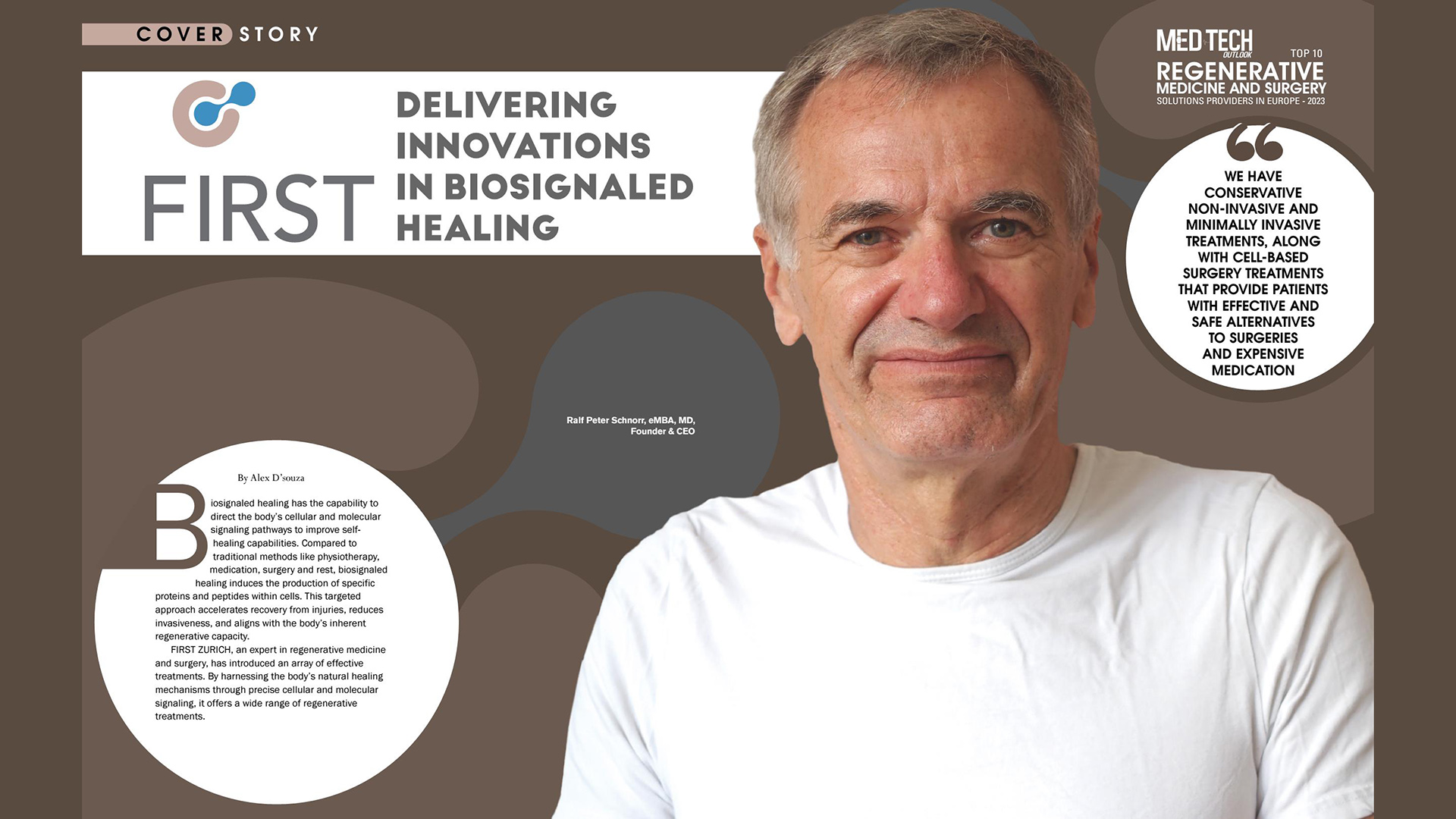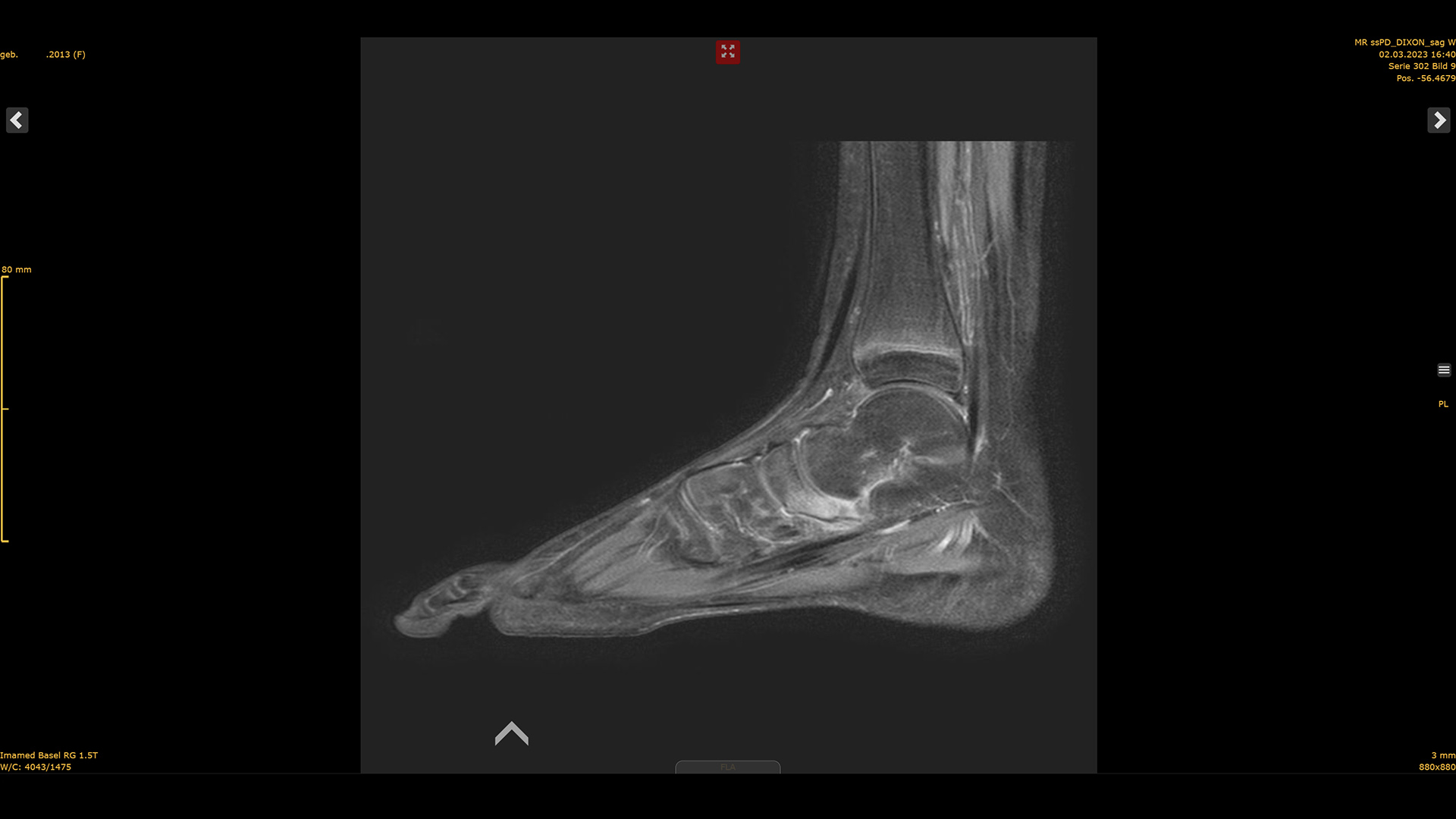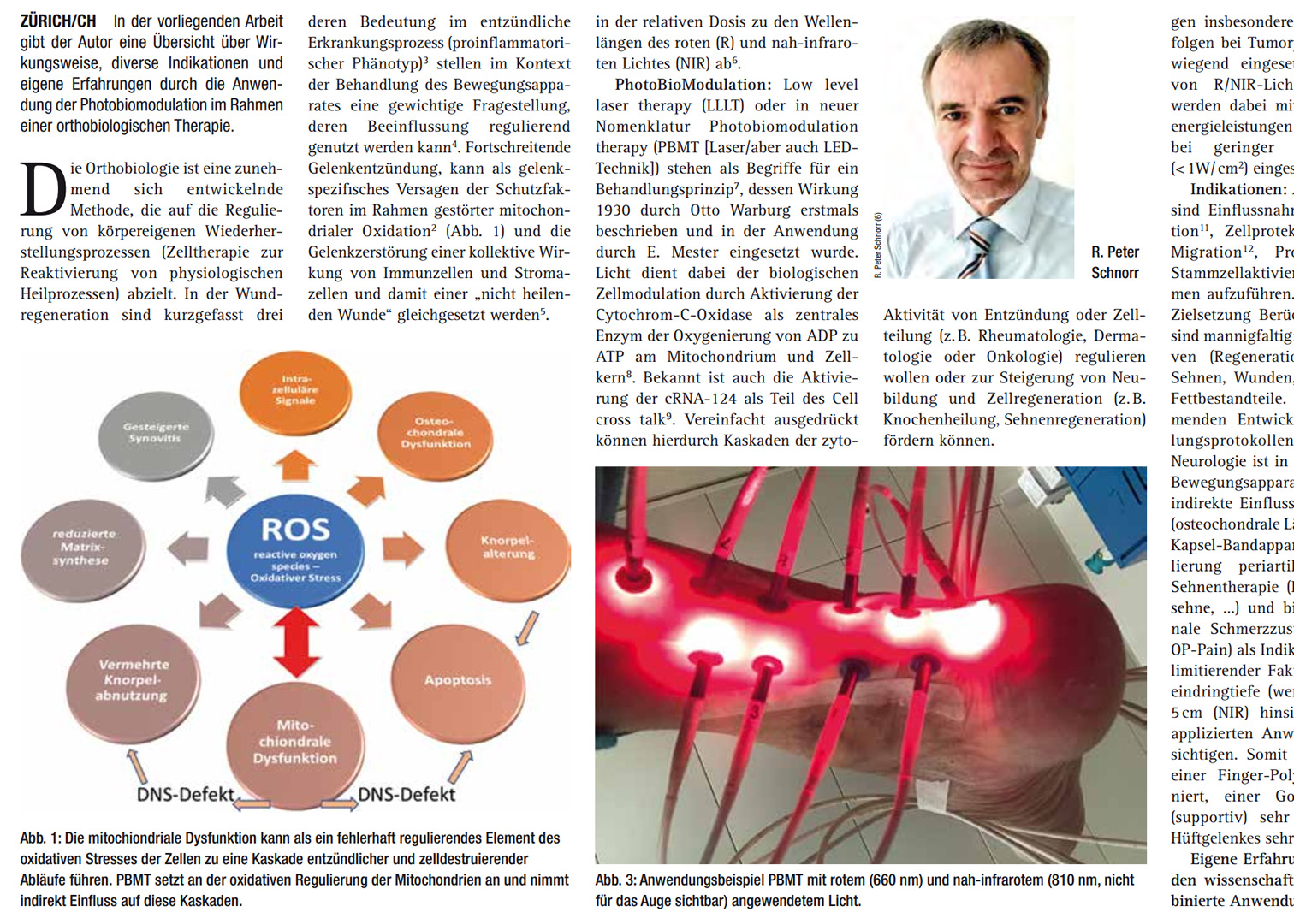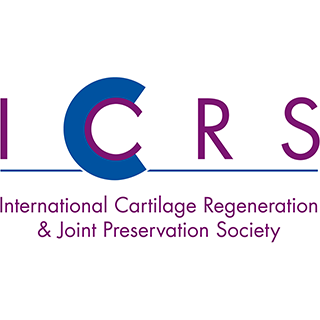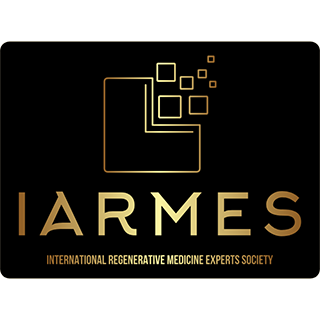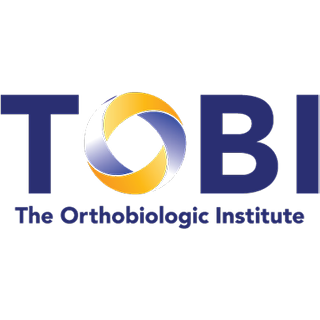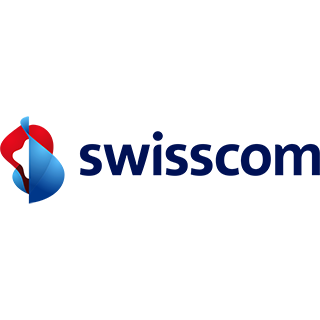
PhotoBioModulation as part of an orthobiological treatment concept
Orthobiology is an increasingly developing method that aims to regulate the body’s own restorative processes (cell therapy to reactivate physiological healing processes).
In brief, three factors are central to wound regeneration: extracellular matrix, growth factors and stem cells (MSC/pericytes). Influences on these factors can be inhibitory or activating and thus modify tissue regeneration. The influence on cellular senescence as an irreversible cell cycle in the ageing process and the influence on neutrophils and their significance in the inflammatory disease process (proinflammatory phenotype) are also important issues in the context of the treatment of the musculoskeletal system, the influence of which can be used in a regulatory way.
Progressive joint inflammation, can be equated as a joint-specific failure of protective factors in the context of disturbed mitochondrial oxidation and the joint destruction of a collective action of immune cells and stromal cells and thus a “non-healing wound”. Light as a stimulus is known to us as a factor of psychological well-being, as an activator to provitamin D3, as a modulator of our skin tanning and many other influences, up to and including damage to cells (e.g. UV-B). The largest proportion of daylight is represented at 500 nm wavelengths (blue/green [B/G]) and decreases exponentially in relative dose to red (R) and near-infrared (NIR) wavelengths.
